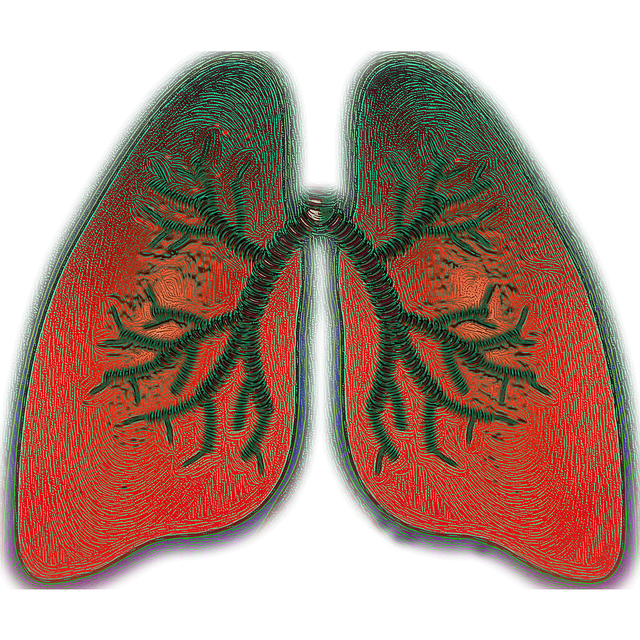Asthma is a chronic respiratory disease that makes it very difficult to breathe.
What is the disease?
This condition leads to inflammation, which temporarily narrows the airways, which carry oxygen to the lungs. If the asthma attack is severe, it can lead to reduced activity and even difficulty speaking. The degree of asthma attacks varies from mild to life-threatening.
The term bronchial asthma is also used
The degree of asthma attacks varies from mild to life-threatening. Asthma is characterized by recurrent attacks. Although there is no known way to completely cure it, the symptoms can be controlled with effective therapy.
At what age does it appear?
Asthma can occur at any age, although it is more common in people under 40. It is one of the leading chronic diseases in children. People who have asthma in their families are more at risk of developing the disease. Allergies and asthma can occur simultaneously or be accompanied by eczema.
Asthma Symptoms
Asthma is characterized by recurrent episodes of wheezing, shortness of breath, heaviness and cough, reaction to non-specific irritants (toxic gases – sulfur dioxide, nitrous oxide, ozone, dust, cold air, odors). Regardless of the length of the disease – whether it is two months or years, there are always changes in the basement membrane of the bronchial tree.
Forms of asthma
Airway obstruction – in people suffering from asthma, allergens, colds, and respiratory viruses lead to contraction of the muscles around the airways, in which air cannot move freely inside. One is left breathless, there is wheezing in the chest;
Inflammation – in asthma, the bronchial tubes are red and swollen. This inflammation is thought to play a role in the development of long-term damage that can occur in the lungs as a result of asthma. Therefore, the treatment of this inflammation is key to the treatment of asthma in the long run;
Irritated respiratory tract – The airways of people with asthma are extremely sensitive. They usually react violently and shrink even in the presence of the slightest irritants such as pollen, dust or smoke, stress.
Asthma in children
Asthma is one of the leading chronic diseases in children and is a huge burden for both children and their loved ones. The disease limits children’s ability to learn, play and even sleep.

It is believed that a child has asthma if he has had more than three bronchiolitis. They may be due not only to an allergic basis but also to a purely viral origin.
Children at a young age suffer from bronchiolitis. When they grow up and the immune system becomes more mature, allergic rhinitis begins to react. Who has asthma, has allergic rhinitis, and vice versa.
The reasons for its appearance can be entirely internal, but also the factors of the external environment can have significant merit.
Asthma internal factors:
1. Genetic:
- Genes predisposing to atopy
- Genes predisposing to hyperreactivity
2. Obesity
3. Gender – more common in women
Asthma factors from the external environment:
1. Allergens:
- household – mites, domestic animals, cockroaches, fungi, dust
- pollen (causing hay fever)
2. Infections – mostly viral
3. Professional irritants
4. Smoking (the main reason for the development of COPD)
Types of asthma attacks
An asthma attack is a sudden worsening of the symptoms of the disease. During an attack, the airways constrict and swell, or fill with mucus.

The most common symptoms of an asthma attack are:
- Cough at night
- Chest wheezing on exhalation
- Shortness of breath or difficulty breathing
- Tightness, pain, or pressure in the chest
Not everyone has the same symptoms of an asthma attack. You may have only some of them, or you may have different ones and appear at different times. Symptoms may be very mild, such as decreased activity or lethargy. Their degree can vary from mild to very severe between attacks.
Severe asthma attacks
Prolonged asthma attacks that do not respond to bronchodilators should be treated as emergencies. This is a life-threatening condition and requires urgent medical attention. It is called status asthmatics.
Symptoms may include:
- Constant shortness of breath
- Inability to pronounce whole sentences
- Shortness of breath even when lying down
- Feeling of tightness in the chest
- The bluish tint of the lips
- Excitement, confusion, or inability to concentrate
- Shrugged shoulders and stretched muscles of the abdomen and neck
- A need to sit or stand up to breathe easier.
Diagnosis
If you experience any of these symptoms or frequent bronchitis, you should consult a specialist who will order the necessary tests to determine if it is asthma. Please, keep in mind that asthma resembles several other diseases and in order to conduct proper therapy, an accurate diagnosis must be made.
Treatment
Both the frequency and severity of asthma attacks can be controlled with medication like Salbutamol, as well as by limiting contact with the environmental irritants that cause the attacks. Asthma treatment can range from inhalers to medications that are taken orally or through a special machine. If a child has a family history and has already had three bronchiolitis, prophylaxis with inhaled corticosteroids is started. They should be administered by inhalation for at least a year, and during this period, if the child does not have a seizure, then his treatment is successful.
Asthma control
Asthma is characterized by recurrent attacks. Although there is no known way to completely cure it, the symptoms can be controlled with effective therapy. It is very important for the patient to follow the treatment plan prescribed by his doctor, take his medication, and avoid the irritants that provoke asthma attacks. The patient should play an active role in controlling asthma, keeping to the exact time of medication, monitoring and recording his symptoms regularly, and then discussing them with his doctor.

